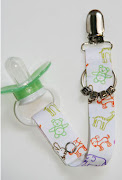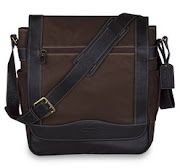Concerned About BPA?
You will definitely want to check out this report about the dangerous endocrine-disrupting hormone BPA that is often found in children's feeding products. It'll only take a few minutes to become better-informed and able to protect your children.
Question: Would you like to see the Baby Boutique offering BPA-free bottles, sippy cups, and so on? Which ones interest you the most.
Is Your Child’s Car Seat Safe?
By: Kay Green
We keep hearing about how 4 out of 5 car seats are installed incorrectly. How can you be sure your child’s is installed correctly? One way is to read the instruction manual that came with your child’s car seat and your car’s owner’s manual. That will give you some good clues. You can also have it checked by your local fire station or car seat safety clinic.
Parent’s January Magazine tells us the 8 most often made mistakes? Have you made any of them? http://www.parents.com/articles/health/5198.jsp
Mistake #1: Seat Too Loose
The seat should not move more than one inch right to left.
Mistake #2: Harness Too Loose
You should not be able to pinch the fabric of the harness belt.
Mistake #3: Facing Wrong Way
Forward facing can not happen until the child is 1 year old AND more than 20 pounds.
Mistake #4: Wrong Angle
Rear facing infant seat should be at a 45 degree angle.
Mistake #5: Retainer Clip Wrong
This clip must be at arm pit level.
Mistake #6: Wrong Slots
Read your car seats instructions.
Mistake #7: No Booster Seat
Children up to 8 years, 80 pounds and 4'9" need to be in a booster seat.
Mistake #8: Recalled Seat
Check your car seat against the recalled list often.
National Highway Traffic Safety Administration (NHTSA)
Harness Error - Another mistake I see often is taking kids out of the 5-point harness too soon. The child needs to stay in the harness until they are 4 years and 40 pounds. When you switch to a booster with no harness for a child over 4 years and 40 pounds remember to belt the booster seat into the car even when your child is not in it. If not the booster seat can become a flyer projectile in a wreck.
Right Size Seat - Is your child in the right size car seat? I saw a mom with a 17 mo old in an infant car seat. She said "He is under 20 pounds so I can not move him" WRONG. Car seats have weight, height, and age requirements. Most babies will be out of the height requirements for an infant car seat at 5-7 months. Their head should be at least one inches from the top of the car seat.
My daughter was under 30 pounds in her 40 pound limit convertible car seat and I thought fine. But then saw the straps were not staying on her shoulders well. She was too tall for it and had to move to a booster seat (with 5 point harness) that held 22-80 pounds. The forward facing car seat should have the straps coming from above their shoulders. When the child's shoulders are taller than the highest slot it is time to move them to a new seat.
SEAT SIZE GUIDELINES:
Check your seats instructions to verify these for your seat.
Newborns birth to 26 inches - infant rear facing carrier seat
Babies over 20 pounds PLUS 1 year - rear facing convertible seat
Toddlers 1 yr PLUS 20 pounds to 40 pounds - forward facing seat with 5 point
Preschoolers 4yrs/40 pounds to 8yrs/80 pounds - Booster seat with cars belt over the top.
Emergency Contact Card - Additionally your child’s car seat should have emergency contact info attached. In a car accident professionals need to be able to reach dad at work or grandma if you are not able to help your child. A car seat ID card with a medical release signature will protect your child in a car accident giving medical professionals all the information they need to treat your child immediately.
Booster Seat Rules - Most state rules now require that children’s stay in the booster seat until 6 years AND 60 pounds. Some states say 8 years AND 80 pounds. The new federal guideline is until age 8 or 4' 9" tall. This means safer kids and fewer fatalities for children in car wrecks. I am glad to keep my child in her comfortable car seat. She is happier and healthier every time we go in the car. Since she is so comfortable in her favorite booster seat she travels much better.
Keep your child in a booster until the right age/weight for your states rules AND until your child can sit on the seat and have the seat belt fall across the chest without touching their neck/face, and until their legs bend correctly at the end of the seat. (Usually 4'9")
BOOSTER SEATS & the "5 STEP TEST - In order to work properly, a shoulder belt needs to be across the collarbone and the lap belt needs to be on the hipbones. However, children often slip the shoulder belt under their arm or behind their back, losing all upper-body protection. Or, they slide forward so their knees bend comfortably over the edge of the seat, making the lap belt ride up on the abdomen. In these cases, the seat belt CANNOT work properly! Children can slide down and out of the restraint, or the belt can be forced into the stomach, causing damage to internal organs. These types of injuries are known as "seat-belt syndrome."
Use the following 5 Step Test. If you answer "No" to any of these questions, your child must be in a booster seat:
1. Does the child sit all the way back against the auto seat?
2. Do the child's knees bend comfortably at the edge of the auto seat?
3. Is the lap belt touching the top of the thighs, not the tummy?
4. Is the shoulder belt centered on the shoulder and chest?
5. Can the child stay seated like this for the whole trip?
Children 4-8 years - Children over 4 and 40 pounds should be in a booster seat without a harness (unless you have the one Britax seat that has harnesses rated to 65 pounds or the RADIAN rated to 80pounds). Most all boosters have harnesses only rated to 40 pounds so using them for your child heavier than that puts them at risk. I recently learned that my daughters booster seat should NOT be connected with the latch system and anchor strap when using it for her with automobiles seat belt (not the 5 point harness). The seats have not been tested with both latch belt, anchor belt and cars seat belt over the top. They have been tested with the cars belt only over the top.
Please take the time to be sure that your car seat is installed correctly, fits your child, has emergency contact information. Go to one of the many free Car Seat Safety Inspections to make certain. If the event of a wreck you will be glad you covered all the bases.
CAR SEAT REQUIREMENTS
Infant car seat: until 20 pounds or 26 pounds or their head is one inch from top of seat. (The Graco SAFE SEAT goes to 30 lbs and 32”)
Rear facing car seat: until at least 20 pounds PLUS 12 months. It is preferred they stay rear facing until 18 months or more.
5 point harness car seat: age 1-4 years or more
5 point harness limit: most end at 40 pound weight limit. If you have a child heavier than 40 pounds and less than 4 years get the Radian or Britax car seat for higher weight limit.
Booster Seat: Age 4-8 or until 4’ 9”.
Our State rule says: until 6 yrs PLUS 60 pounds.
Federal guideline says: until 8 yrs or 4’ 9”.
Buckle Buddy: When moving a child over age 6 and less than 4’ 9” use the BUCKLE BUDDY to make the belt fit correctly.
Car Seat Safety Guide. Find out what the weight and height limits are for the car seat you own or are considering buying.
Article Source: http://www.thewahmshack.com/articledirectory
About The Author: Kay Green is the founder of www.MyPreciousKid.com Children's Safety Products and Baby Gear. Kay has a passion for keeping kids safe and giving parents peace of mind. Kay & Russell, her husband of 27 years, live in Oregon with their 4 children. www.KayGreen.com www.PreciousKids.org www.123HomeBusinessGuide.com COPYRIGHT 2000-2007 My Precious Kid®, Kay Green. All rights reserved.
Floatie Swim Suit Safety Warning
I wrote this post several years ago, and now dig it out every year and re-post to share with people each summer.
We have an Easy Set pool at our house. It's a pretty big one, and we have floatation swim suits for our three youngest boys to wear, although we keep the pool shallow enough that all of them can walk around in it and still have their heads above water. Last year when I bought the suits the baby was one and the better quality suits did not come in his size, so I got a cheaper one, which he had continued to wear this year.
The other day the kids were playing in the pool while my husband and I sat on the deck watching them and chatting. Our youngest, who is now 2, lost his footing in the pool and very quickly was floating face down in the water. Fortunately my husband saw it right away and got to him within just a few seconds, so everything turned out ok.
BUT
The problem is that this suit was not designed to flip a child over onto their back if they needed to rely on the floatation! Our baby was helpless, face down in the water. He would have actually been safer with no suit on at all, since he would have been able to stand to his feet after losing his footing.
It only takes a very few moments for a little one to drown. I am so thankful we were right there with our eyes on the pool happenings.
We tossed out that suit and today I went and bought him one of the better ones, that are designed to keep a kid floating on their backs. Here is the difference between the two suits:
The kind that flips a child onto their back has a float in the front of the suit that is longer than the one in the back.
The kind of suit that put my baby into the pool face first is a kind that is designed for children who need a floatie while learning to swim. The floats are all around the suit and are the same size all the way around.
Just thought someone else might appreciate the reminder. Go check and see if your little one's floatie suits will flip them to their backs in their moment of need.
















